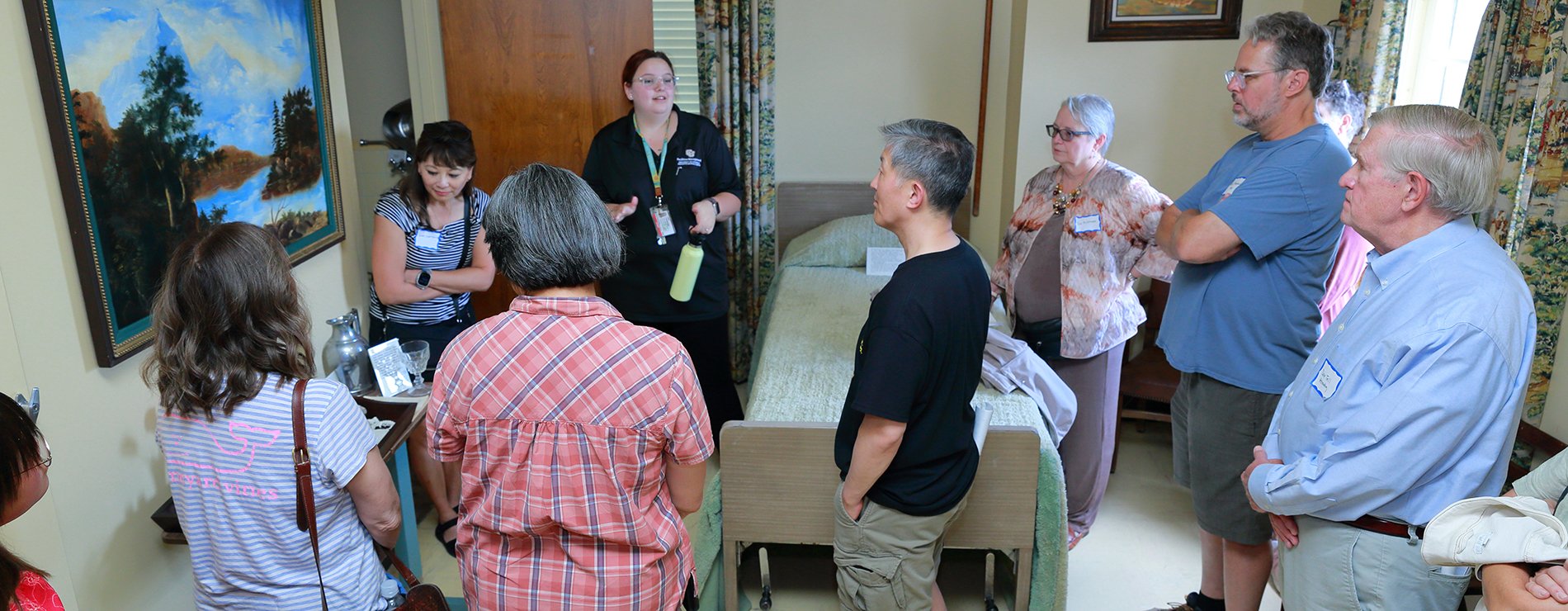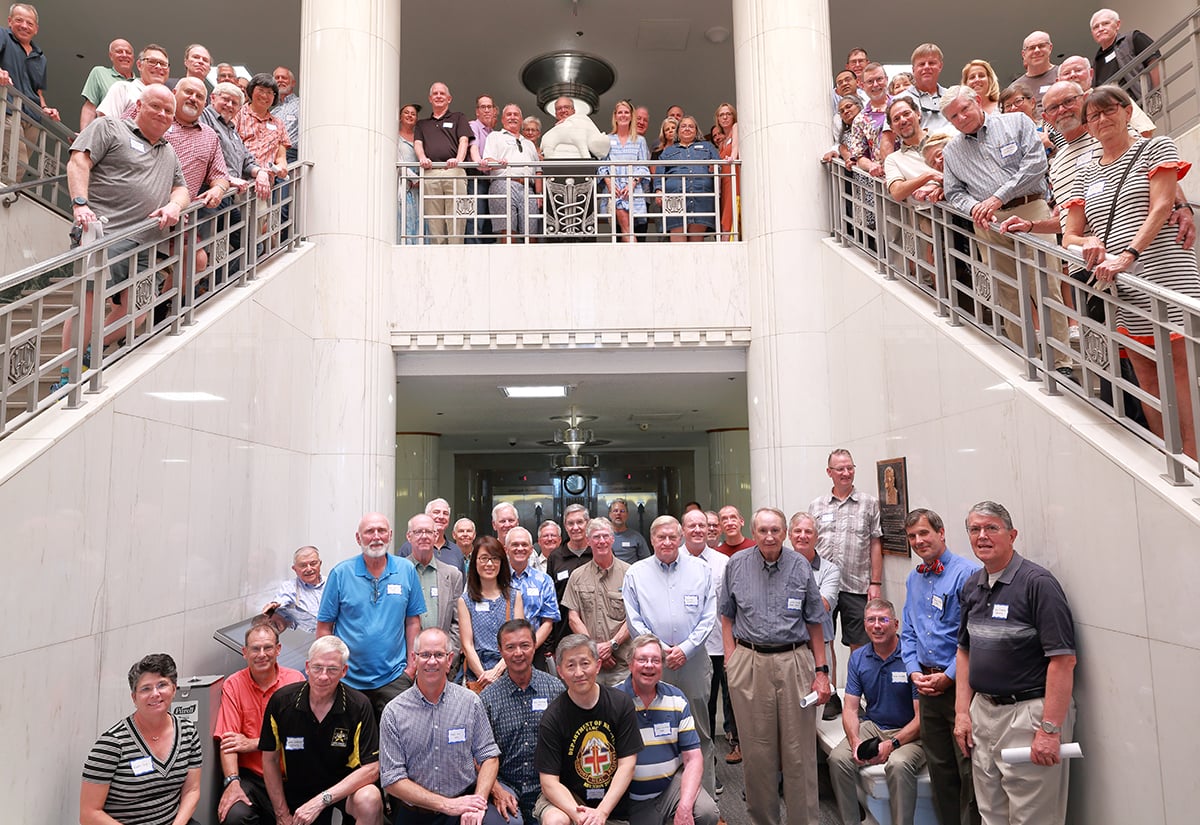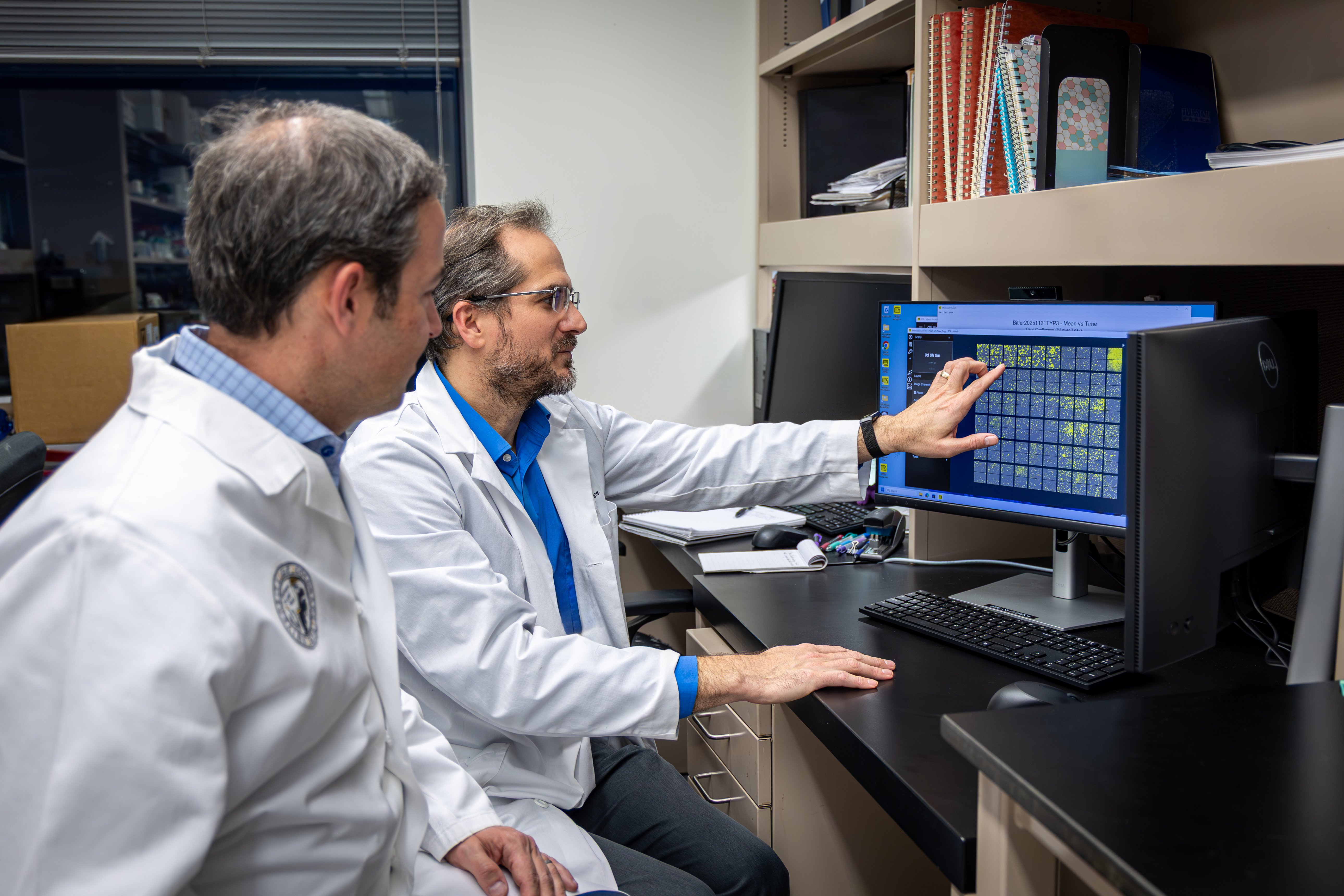As Nicholas DiBella, MD, walked through the bright halls of UCHealth University of Colorado Hospital, heading toward the first-ever reunion of physicians who served at the Fitzsimons Army Medical Center (FAMC), memories came flooding back.
“I’m probably one of the oldest people at this reunion,” said DiBella, who would soon reunite with FAMC colleagues he hadn’t seen for decades. “I was here in the Vietnam era, and I can remember we had all of these outlying buildings that had been built after World War II. All of these wooden temporary buildings, and we had them full of patients – all of these poor guys and gals coming back from ’Nam. There were patients spread all over the campus.
|
|
“So, it’s wonderful to see that (the campus) is still being used for healthcare,” added DiBella, who served as chief of hematology-oncology during a second FAMC stint up until his retirement in 1984. “I’m proud of that.”
Milestones over 78 years
Pride and camaraderie filled a hospital conference room on July 8 as 126 former FAMC Department of Medicine doctors – some who served in top leadership and most who now live out of state – came together for the first time since the FAMC fell victim to Base Realignment and Closure (BRAC) in 1996. The FAMC’s history spans many milestones, including:
- its beginnings as U.S. Army General Hospital No. 21 built upon a former tree nursery in 1917;
- the opening of a rebuilt Fitzsimons General Hospital (now the Fitzsimons Building) on Dec. 3, 1941, just four days before the Japanese bombing of Pearl Harbor. During WWII, the sprawling campus treated an average of 5,000 patients a day;
- the extended stay of President Dwight Eisenhower for treatment for a heart attack in 1955; and
- its redesignation as Fitzsimons Army Medical Center in 1973.
After the mid-90s BRAC, “everyone scattered to the four winds,” said Joseph Chang, MD, the last chief resident at FAMC. He quickly discovered that he “more than held my own” against new colleagues at Ivy League institutions on the East Coast. “I realized I got really good training here, and when Fitzsimons closed, we had nowhere to go and stay connected; there was no email,” Chang said. “I felt really bad that this was such a great institution that trained so many great doctors, and nobody knows about it.”
|
|
When a few FAMC colleagues died in recent years, Chang knew he needed to prioritize his hopes for a reunion. He connected with FAMC colleague Mark Dorogy, MD, who told the group: “This bond of brotherhood is one you just can’t find anywhere else.” Together, they co-organized the long-in-the-making gathering.
“Professionally, I haven’t found this kind of camaraderie in the civilian sector,” Chang said. “Here, we were all in it together – this is it. We have what we have, and we’ve got to make the best of it. We were doing it for a cause that was bigger than us, and I just felt that that had to be recognized.”
At its height, FAMC had 506 hospital beds and could expand to 3,000 beds during war time, said Col. (Ret.) Sterling West, MD, MACP, who presented FAMC’s full history at the reunion. Overall, Fitzsimons served over 140,000 active-duty military personnel and their dependents, plus another 200,000 retirees. The institution was a tertiary referral center for 13 states, including the Indian Health Service.
National impact in teaching, training and research
“We achieved excellence in teaching and training,” West said of the Department of Medicine. “That was demonstrated by our medicine board pass rate being 95% to 97% every year for (our trainees’) first time taking the board (exam), compared to the national average of 67%. Some of our classes scored in the 99th percentile – that’s really pretty amazing.”
|
Fitzsimons Army Medical Center. Photos courtesy of Randall Lee. |
After the Vietnam War, doctors were leaving the Army, and FAMC teetered on the edge of shuttering – just one of several times Washington, D.C., politicians considered closing the hospital. But when Congress created the Health Professions Scholarship Program in 1972, FAMC experienced another renaissance, spurring more fellowship disciplines and jump-starting the Department of Medicine’s research enterprise.
“We were 10 years ahead of our time” when FAMC launched a research requirement for internal medicine residents in 1978, said West, who went on to become a professor of medicine in the Division of Rheumatology at the University of Colorado School of Medicine. Researchers at FAMC published 42 papers in peer-reviewed journals and led advancements in care for respiratory, rheumatological and gastrointestinal diseases, as well as diabetes.
“Where else are you going to see African trypanosomiasis (sleeping sickness) than in the military?” West said. “Civilian programs don’t see that.”
‘Put everything in perspective’
Jane Yeun, MD, who traveled with her husband, a former CU School of Medicine faculty member, to the reunion from Northern California, served at FAMC from 1992 until the 1996 closure. She became chief of nephrology early in her tenure after another colleague retired. Asked if she was aware of the national impact of Fitzsimons, Yeun said, “At the time, things were just happening, and we were doing what we needed to do. So I don’t know that we realized the impact at the time. It wasn’t until Dr. West put everything into perspective historically.
“I feel super proud – it was pretty amazing stuff,” she said.
The massive transformations at Ninth Avenue and Colorado Boulevard – site of the CU Health Sciences Center – and the former home of FAMC in Aurora stunned the couple, who last saw the area in 1996. “We were pretty amazed,” Yeun said.
| Current CU School of Medicine (SOM) faculty who attended the FAMC reunion:
Retired or previous SOM faculty in attendance:
|
“The other thing that’s great about this is the camaraderie,” she said. “I haven’t seen some of these people for 20-plus years, but you see them now, and it’s just like yesterday.”
The group laughed at vintage video skits and “Who said it?” quotes and enjoyed tours of the Fitzsimons Building, including the Eisenhower Suite. An in-memoriam segment – a reading of names of FAMC colleagues who have died – was a somber pause amid an otherwise jubilant and reminiscence-filled day.
At the end of his historical presentation, West said, “We’ve had excellence in patient care, in teaching, in research, and in our military mission. We should feel very proud of what we accomplished during our time here at Fitz. We have a quite special group, and so I like to think that, yeah, we were BRAC’d, but we’ll never be forgotten.”

 Reunion attendees tour the Eisenhower Suite in the Fitzsimons Building, previously known as the Fitzsimons Army Medical Center, as part of their day-long gathering on July 8.
Reunion attendees tour the Eisenhower Suite in the Fitzsimons Building, previously known as the Fitzsimons Army Medical Center, as part of their day-long gathering on July 8. Fitzsimons Army Medical Center (FAMC) reunion attendees study a model of the modern-day University of Colorado Anschutz Medical Campus in the Fitzsimons Building. It was the first gathering of the Army base's colleagues since the FAMC closed in 1996.
Fitzsimons Army Medical Center (FAMC) reunion attendees study a model of the modern-day University of Colorado Anschutz Medical Campus in the Fitzsimons Building. It was the first gathering of the Army base's colleagues since the FAMC closed in 1996.  A group photo of the first-ever reunion of physicians who served at the
A group photo of the first-ever reunion of physicians who served at the 

